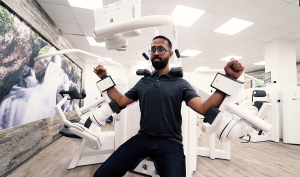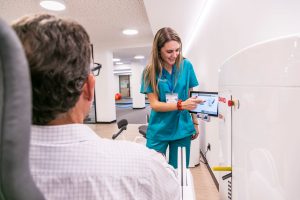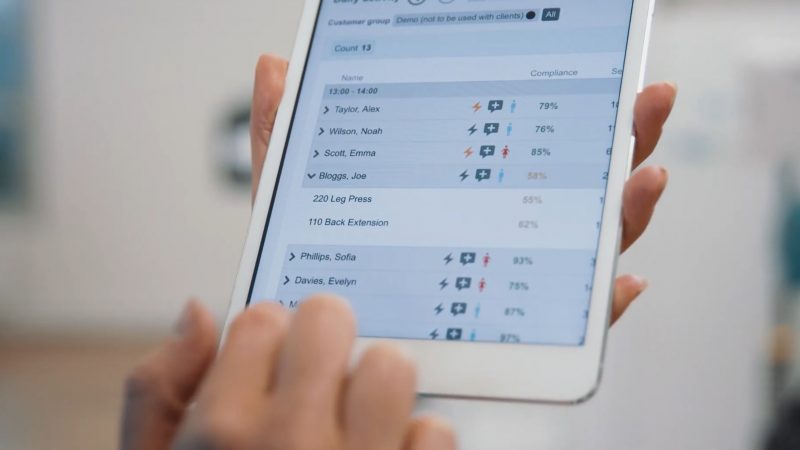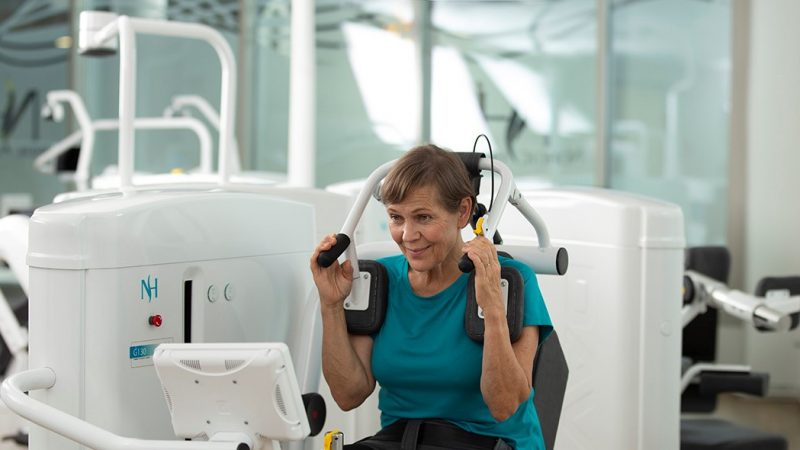Clinimetrics
On the basis of a Delphi study on rehabilitation after PICS and clinimetry used
In the REACH project the Dutch Hoogstraat Rehabilitation Clinic has the following advice regarding clinimetry at PICS after COVID-19:
- Exercise capacity/intensity: 6-minute walking test (6MWT) and 10-meter walking test
- Functional capacity, and bicycle ergometry (submax capacity).
- Physical functioning: TUGT, FIM, SF36 (physical function) and Barthel Index
- Respiratory muscle function: MIP and MEP
- Muscle strength: MRC scale, HKK, handheld dynamometry, Motricity Index.
- Fatigue: multidimensional fatigue inventory (MFI) or the Borg scale.
- Psychological factors: HADS, GPS, IES, PLC-5 and TSQ
- Cognitive complaints: The Montreal Cognitive Assessment (MoCA
- Nutrition: SNAQ65+ for malnutrition screening
- Psychosocial complaints of partner/adjacent: Caregiver Strain Index (CSI) and HADS (8)

Treatment protocol COVID-19
A number of established rehabilitation protocols indicate which treatment program COVID-19 patients should follow after long-term/complicated ICU admission. (7,8) A basic treatment program can be drawn up and adapted to each patient.
Basic treatment program COVID-19
The basic treatment program COVID-19 post-IC of the Hoogstraat has a duration of 4-8 weeks, in which the length of the program is determined on the basis of the rehabilitation goals necessary for dismissal. After the intake phase (first 2 weeks) a clear picture forms of all factors that determine the level of functioning of the patient. Then, a team meeting is scheduled (no later than the 3rd week after admission) in which treatment goals are evaluated with the patient (and partner/next-door) and further follow-up (in first line or in MSR) is discussed. If earlier hospital discharge is possible, the program will be stopped earlier.
The aim is to continue rehabilitation in outpatient programmes.
The aim is to continue the rehabilitation, if possible, in outpatient rehabilitation programmes (via ICU aftercare outpatient clinics), in the first line or from home. At the intake, the conditions for dismissal are already discussed, so that this can be targeted from the start of rehabilitation. Possible remote rehabilitation (via telemonitoring and instructions via video) with the involvement of first-line therapists is a logical continuation of the clinical rehabilitation phase. (8)
During the intake by the rehabilitation doctor/AIOS, treatment goals are drawn up in consultation with the patient. Because of the wide variety of possible consequences of PICS and seriousness, this is not a cookbook recipe, rather it requires an individual approach (no different from other diagnostic groups). The following treatment goals can be considered:
- Improving general fitness
- Increase mobility: independent transfers, independent walking, climbing stairs
- Prevent loss of function: contractures, pulmonary complications and decubitus
- Respiratory force and adequate coughing techniques
- ADL independence
- Improve arm/hand function
- Insight/coping due to reduced energy
- Understanding compensation strategies
- Stable mood (signaling / treating depression, anxiety and PTSD
- Healthy nutritional status
- Swallow safely
- Rehabilitant and partner have insight into the consequences of prolonged ICU admission
- Partner counselling; identifying any psychological complaints and overburdening in good time. (8)

Basis of the programme
The overview below forms the basis of the PICS rehabilitation programme after COVID-19. It concerns physiotherapy, sports and needs to be adapted to a tailor-made programme at an individual level during the course of the programme.
3-5x/week physiotherapy:
Improve overall VO2max/fitness. In case of indication: if pulmonary problems are the main complaint. aimed at promoting ventilation, coughing techniques (sputum mobilisation) exercise, increasing inspiratory and expiratory breathing power.
1-2x/week physiotherapy:
Improve overall VO2max/fitness Intensity and frequency by means of possibilities, exertion possibilities of rehabilitant. Indication: if general deconditioning is in the foreground (without important pulmonary component) extra sport. (8)
Bastiaan Meijer
Digital Marketing Manager
bastiaan.meijer@davidhealth.com
Resources websites
1.https://www.alphens.nl/nieuws/coronavirus-wat-is-het.html. Geraadpleegd op 4 april 2020.
2.https://www.trouw.nl/wetenschap/wat-dit-coronavirus-zo-bijzonder maakt~bab00f5c/?referer=https%3A%2F%2Fwww.google.com%2F. Geraadpleegd op 4 april 2020.
3.Wuhan. Ned Tijdschr Geneeskd 2020; 164: D4847. https://www.ntvg.nl/artikelen/nieuw-van-de-markt-coronavirusuitbraak-wuhan. Geraadpleegd op 4 april 2020.
4.https://www.nationalgeographic.nl/wetenschap/2020/02/wat-het-nieuwe-coronavirus-met-het-lichaam-doet. Geraadpleegd op 4 april 2020
5.https://www.scientias.nl/wat-houden-coronapatienten-over-aan-hun-ontmoeting-met-het-virus/ Geraadpleegd op 4 april 2020.
6.https://www.longfonds.nl/nieuws/longfonds-volop-in-voorbereiding-op-nieuwe-patientengroep-door-corona. Geraadpleegd op 4 april 2020.
7.https://www.npi.nl/home-reach#lees-meer-over-herstel-na-covid-19-gerelateerde-ziekenhuis-of-ic-opname
8.https://revalidatiegeneeskunde.nl/sites/default/files/attachments/Beleid/COVID-19/behandelprogramma_covid-19_post-ic_versie_1.0_de_hoogstraat_30_maart_2020.pdf
9.https://www.nurseacademy.nl/leermodules/leermodules_artikel/t/het_post_intensivecaresyndroom_verborgen_ziekte_na_ic_opname
10.RIVM-baas legt uit: schatting ic-ligduur al eerder naar boven bijgesteld (2 april 2020)
https://www.parool.nl/nederland/rivm-baas-legt-uit-schatting-ic-ligduur-al-eerder-naar-boven-bijgesteld~b3664630/?referer=https%3A%2F%2Fwww.google.com%2F
11.https://www.kngf.nl/binaries/content/wp-content/kngf/onbeveiligd/nieuwsitem-bestanden/2020/maart/fysiotherapie_covid-19_v1_def.pdf
 English
English 























